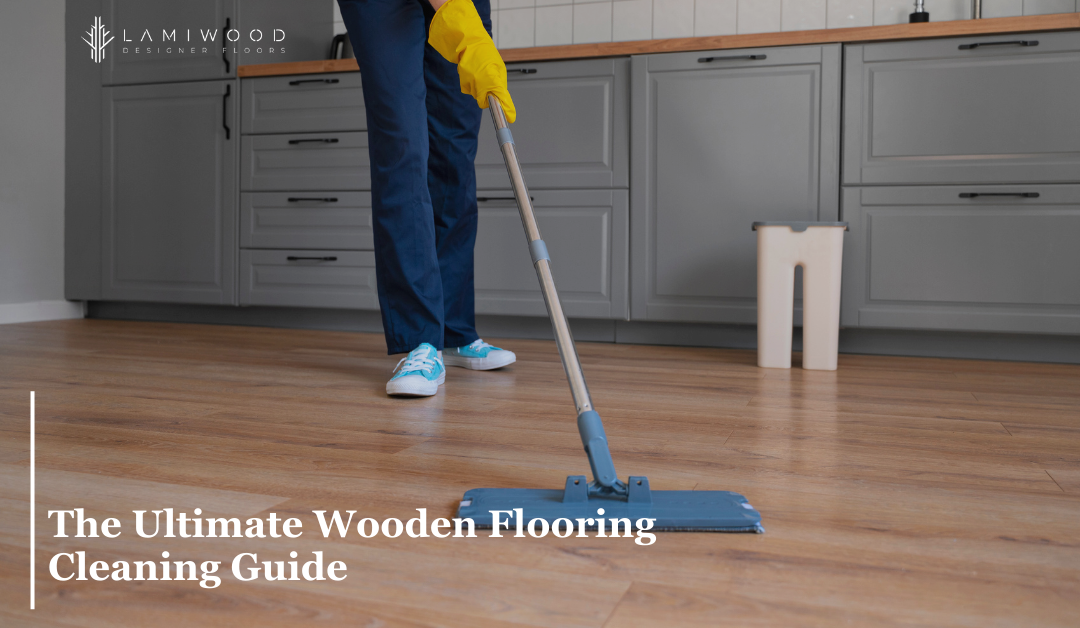Wooden flooring is beloved by homeowners for its beauty, durability, and easy maintenance. However, even the most low-maintenance floors require some regular cleaning and care to keep them looking their best. Here is the ultimate wooden flooring cleaning guide, with tips and tricks to help you keep your floors adorably spotless and sparkling.
The Basics of Wooden Flooring Maintenance
Before we dive into the specifics of cleaning your wooden flooring, let’s review some basic maintenance tips to keep in mind:
- Sweep or vacuum regularly: Dirt, dust, and debris can scratch your wooden flooring over time, so it’s important to remove them regularly with a soft-bristled broom, microfiber duster, or vacuum cleaner.
- Clean up spills promptly: Wooden flooring is resistant to moisture, but standing water can still cause damage over time. Wipe up any spills or wet spots as soon as possible to prevent warping or staining.
- Use protective pads: Place felt pads or floor protectors under the legs of furniture to prevent scratches and scuffs.
- Avoid harsh cleaners: Harsh chemicals, abrasive scrubbers, or steam cleaners can damage the surface of your wooden flooring. Stick to gentle, pH-neutral cleaners specifically designed for laminate floors.
Deep Cleaning Your Wooden Flooring
Even with regular sweeping and spot-cleaning, your wooden flooring will eventually need a deeper cleaning to remove built-up dirt and grime. Here’s how to do it:
- Step 1: Vacuum or sweep your floors to remove loose dirt and debris.
- Step 2: Mix a solution of gentle, pH-neutral wooden flooring cleaner and warm water according to the manufacturer’s instructions.
- Step 3: Dip a clean microfiber mop or soft cloth into the solution, wringing out excess water until it’s just damp.
- Step 4: Mop your wooden flooring in the direction of the planks, taking care to keep the floors neat.
- Step 5: Rinse your mop or cloth frequently in clean water to avoid spreading dirt around.
- Step 6: Allow your floors to air dry completely before walking on them or replacing furniture.
Dealing with Tough Stains and Scuffs
Sometimes, your wooden flooring may fall victim to tough stains or scuffs despite your best efforts. Here are some tips for dealing with these common issues:
- Grease or oil stains: Blot up as much of the stain as possible with a clean cloth or paper towel. Then, apply a small amount of dish soap to a damp cloth and gently rub the stain in a circular motion until it lifts.
- Ink or marker stains: Dab the stain with a clean cloth dipped in rubbing alcohol, taking care not to oversaturate the floor.
- Scuffs or scratches: Use a soft eraser or a small amount of non-abrasive toothpaste to gently buff out the scuff or scratch.
Maintaining the Shine of Your Wooden Flooring
Over time, your wooden flooring may lose some of its original shine and luster. To restore the shine and protect your floors from future wear and tear, consider the following:
- Use a wooden flooring polish: Look for a polish specifically designed for laminate floors, and apply it according to the manufacturer’s instructions.
- Avoid wax or oil-based products: These can leave a residue on your floors that attracts dirt and dulls the shine over time.
- Consider a professional cleaning: If your wooden flooring looks particularly dull or worn, consider hiring a professional cleaning service specializing in laminate floors.
Conclusion
With a little regular maintenance and the right cleaning techniques, your wooden flooring can stay adorably spotless and sparkling for years to come. Remember to sweep or vacuum regularly, clean up spills promptly, use protective pads, and avoid harsh cleaners. When it’s time for a deeper clean, follow the steps outlined in this guide, and don’t hesitate to call in the professionals if needed. By taking good care of your wooden flooring, you’ll be able to enjoy its beauty and durability for many years to come and maintain a home that’s as adorable as it is functional.
Also, Read: Wooden Flooring and Moisture: Preventing Warping and Damage

